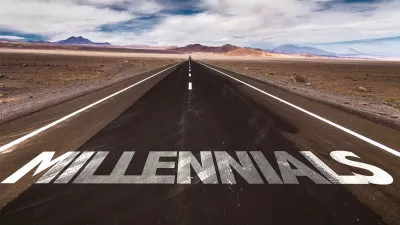Breakthrough Institute co-founder, Ted Nordhaus, explores the etymology of "carrying capacity" from a shipping term to a biological term, but objects to its application to human population. Richard Heinberg of the Post Carbon Institute responds.

"The concept, tellingly, owes its origin to 19th-century shipping, referring to the payload capacities of steamships," writes Ted Nordhaus, co-founder and executive director of the Oakland-based Breakthrough Institute, "a global research center that identifies and promotes technological solutions to environmental and human development challenges."
The term was then applied to livestock and fauna, and from there, human civilization, based on the writings of Reverend Thomas Robert Malthus, including his 1798 book, "An Essay on the Principle of Population."
The ecologist William Vogt was the first to do so in the 1940s, predicting that overuse of agricultural land would lead to soil depletion and then catastrophe. In the late 1960s and early ’70s, Paul Ehrlich focused on food production, and the Club of Rome on material resources.
Nordhaus refutes the neo-Malthusian philosophy of "environmental doom" caused by growing population matched with increased consumption.
Affluence and modernisation bring falling, not rising fertility rates. As our material circumstances improve, we have fewer children, not more. The explosion of human population over the past 200 years has not been a result of rising fertility rates but rather falling mortality rates. With better public health, nutrition, physical infrastructure and public safety we live much longer.
Furthermore, Nordhaus sees a harmful consequence of applying carrying capacity to people.
Viewing humans in the same way that we view single-celled organisms or insects risks treating them that way. Malthus argued against Poor Laws, in the belief that they only incentivised the poor to reproduce. Ehrlich argued against food aid for poor countries for similar reasons, and inspired population-control measures of enormous cruelty.
Writing in support of the concept of carrying capacity, Richard Heinberg, a senior fellow at the Post Carbon Institute, pens a response in Undark: "Ted Nordhaus Is Wrong: We Are Exceeding Earth’s Carrying Capacity."
While exact population numbers are sometimes difficult to predict on the basis of the carrying capacity concept, it is nevertheless clear that, wherever habitat is degraded, creatures suffer and their numbers decline.
Nordhaus seems to think we are exceptions to the rules. Still, as archaeologists have affirmed, many past human societies consumed resources or polluted environments to the point of collapse.
Heinberg goes on to refute Nordhaus' points and suggests devising a scorecard:
What warning signs would you expect to see if we humans were pressing at the limits of global carrying capacity? Resource depletion? Check. Pollution? Check. Dying oceans? Check. Human populations subjected to increasing stress? Double check.
Urban planning application?
The Carrying Capacity Network sees population growth as the underlying cause for many environmental problems including "urban sprawl, growing energy consumption, social alienation, urban decay, and lack of affordable housing." The group writes that the term, "smart growth" has falsely been offered as a solution to the aforementioned problems by two seemingly opposite groups, the Sierra Club and the National Association of Home Builders.
The group praises the approach taken by the American Planning Association.
The American Planning Association (APA) has called unsustainability "a far-reaching issue that extends well beyond the realm of today's urban and regional planner," which suggests openness to searching for real solutions. The APA further recommends future-oriented planning practices that recognize "environmental limits to human development."
Hat tip to Ed Mainland.
FULL STORY: The Earth’s carrying capacity for human life is not fixed

Alabama: Trump Terminates Settlements for Black Communities Harmed By Raw Sewage
Trump deemed the landmark civil rights agreement “illegal DEI and environmental justice policy.”

Planetizen Federal Action Tracker
A weekly monitor of how Trump’s orders and actions are impacting planners and planning in America.

Why Should We Subsidize Public Transportation?
Many public transit agencies face financial stress due to rising costs, declining fare revenue, and declining subsidies. Transit advocates must provide a strong business case for increasing public transit funding.

Understanding Road Diets
An explainer from Momentum highlights the advantages of reducing vehicle lanes in favor of more bike, transit, and pedestrian infrastructure.

New California Law Regulates Warehouse Pollution
A new law tightens building and emissions regulations for large distribution warehouses to mitigate air pollution and traffic in surrounding communities.

Phoenix Announces Opening Date for Light Rail Extension
The South Central extension will connect South Phoenix to downtown and other major hubs starting on June 7.
Urban Design for Planners 1: Software Tools
This six-course series explores essential urban design concepts using open source software and equips planners with the tools they need to participate fully in the urban design process.
Planning for Universal Design
Learn the tools for implementing Universal Design in planning regulations.
Caltrans
Smith Gee Studio
Institute for Housing and Urban Development Studies (IHS)
City of Grandview
Harvard GSD Executive Education
Toledo-Lucas County Plan Commissions
Salt Lake City
NYU Wagner Graduate School of Public Service





























